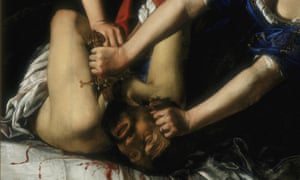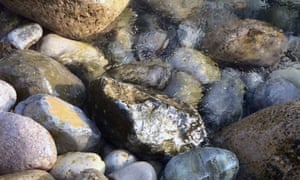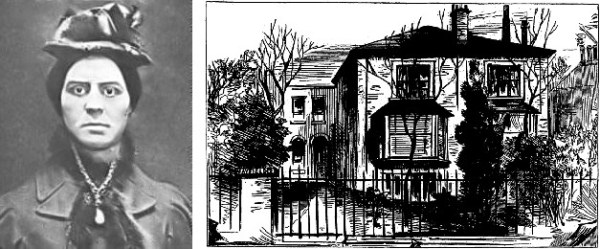A new book collects the unpublished poems of Johnny Cash
via Arts & Letters Daily: Paul Muldoon in Poetry Foundation

Joel Baldwin
The great artist has a finger on the pulse of his time; he also quickens that pulse. In the case of Johnny Cash, his music seems to well up directly from the poverty and deprivation of country life in the Great Depression, through the uncertainty of World War II, the Cold War, Korea, and Vietnam, to the victories of adulation and the vicissitudes of addiction. We might guess, even if we didn’t know, that Cash’s classic “Five Feet High and Rising” is an account of the flooding with which he was all too familiar from his 1930s childhood in the cotton fields of Arkansas.
Continue reading
===================================
via Boing Boing by David Pescovitz

Nanoengineer engineers at Tsinghua University fed silkworms carbon nanotubes or graphene, both of which are approximately 100 times stronger than steel. The silkworms then spun reinforced silk that, according to Chemical & Engineering News, is ‘twice as tough (as regular silk) and can withstand at least 50% higher stress before breaking”.
Continue reading
===================================
via the Guardian by Jonathan Jones

Vengeance is mine … a detail from Judith and Holofernes, representing Gentileschi and the man who raped her. Click here to see the full image.
Photograph: Rex / Museo Nazionale di Capodimonte, Naples
Two women are holding a man down on a bed. One presses her fist against his head, so he can’t raise it from the mattress, while her companion pins his torso in place. They are well-built with powerful arms but even so it takes their combined strength to keep their victim immobilised as one of them cuts through his throat with a gleaming sword. Blood spurts from deep red geysers as she saws. She won’t stop until his head is fully severed. Her victim’s eyes are wide open. He knows exactly what is happening to him.
The dying man is Holofernes, an enemy of the Israelites in the Old Testament, and the young woman beheading him is Judith, his divinely appointed assassin. Yet at the same time he is also an Italian painter called Agostino Tassi, while the woman with the sword is Artemisia Gentileschi, who painted this. It is, effectively, a self-portrait.
Continue reading
===================================
From Brancusi to Ernst to Klein, the greatest painters and sculptors of the time once lived and worked together, sharing beds, a single toilet and their creative brilliance.
via Arts & Letters Daily: James McAuley in The New York Times Style Magazine
NB: nice photo but all rights reserved
There’s a back street in Montparnasse, the entrance to a hospital morgue, where weeds grow in sidewalk cracks and beer cans rust on the pavement. The only discernible sign of life is a corner cafe, but even that feels more like the backdrop of a Cartier-Bresson photograph than a place to purchase actual coffee. On a clammy afternoon in August, the owner sits outside alone, smoking.
Continue reading
===================================
via National Archives Blog by Nigel Taylor
The movie industry has a long history of flops. This is the story of a film made nearly 100 years ago that culminated in litigation and a court case.
In 1919, just over a couple of decades after the first British feature film was produced, the silent movie ‘The Lackey and the Lady’ was completed in England. It tells the story of the daughter of a wealthy banker married to a servant who ran off with him to Australia, and was based on a novel by Tom Gallon.
Continue reading
===================================
via New Statesman by Matthews Adams
The Murderous History of Bible Translations by Harry Freedman reveals the fraught story of the famous text.
In 1411, the then archbishop of Canterbury, Thomas Arundel, wrote to Pope Gregory XII about the condition of the Catholic Church. In his letter, as he looked back on recent threats to Catholicism, Arundel allowed himself some remarks about a dangerous nemesis: the “pestilent and wretched John Wyclif, of cursed memory, that son of the old serpent”.
Continue reading
===================================
Originally published in the Manchester Guardian on 25 September 1916
via The Guardian by Helena Swanwick

Pebbles on a beach, Lulworth Cove, Dorset. Photograph: Richard Nelsson
The serpentine stones which form the shingle on the Lizard peninsula are very tempting to collect, and we have had the happy idea of using them in bowls this winter, to grow narcissi in and Roman hyacinths. A child is the pure artist in collection. He needs no apology. The mere contemplating of his hoards, laying them out in array, counting and sorting, is amply enough joy for him. But we grown-ups are compelled to seek a plea of use, and, having found it, we may indulge our childishness. It is fortunate that the use we have hit upon allows, since we cannot learn to polish the stones, of the next best way of bringing out the colours – by wetting them.
Continue reading
===================================
via Boing Boing’s Futility Closet

In 1879, a ghastly crime gripped England: A London maid had dismembered her employer and then assumed her identity for two weeks, wearing her clothes and jewelry and selling her belongings.
In this week’s episode of the Futility Closet podcast we’ll describe the murder of Julia Thomas and its surprising modern postscript.
We’ll also discover the unlikely origins of a Mary Poppins character and puzzle over a penguin in a canoe.
Continue reading
===================================
via 3 Quarks Daily: Ewen Callaway in Nature

Researchers know little about cat domestication, and there is active debate over whether the house cat (Felis silvestris) is truly a domestic animal – that is, its behaviour and anatomy are clearly distinct from those of wild relatives. “We don’t know the history of ancient cats. We do not know their origin, we don't know how their dispersal occurred,” says Eva-Maria Geigl, an evolutionary geneticist at the Institut Jacques Monod in Paris. She presented the study at the 7th International Symposium on Biomolecular Archaeology in Oxford, UK, along with colleagues Claudio Ottoni and Thierry Grange.
Continue reading
===================================
via Boing Boing by Jason Weisberger
No office sounds busy without a dot matrix printer ripping in the background.
Video here
No comments:
Post a Comment